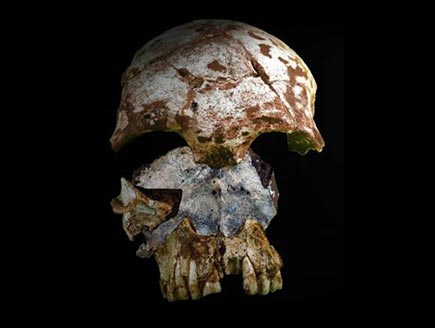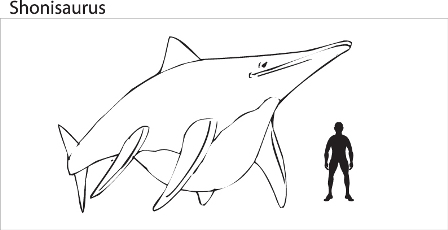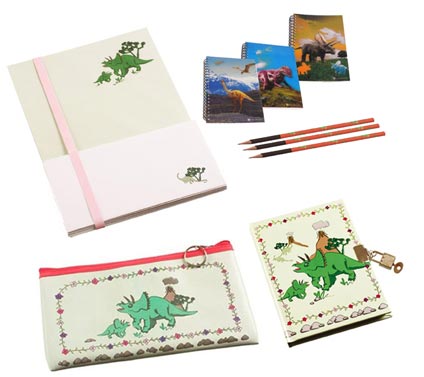Laos Man – Rare Fossil Skull Suggests Humans Spread Rapidly into South East Asia
Laos Fossil Skull Indicates Rapid Human Migration
Most palaeontologists believe that hominids (that group of upright apes to which our own species H. sapiens belongs) evolved in Africa. This is why that continent is often referred to as the “cradle of mankind”. However, there is still debate as to how our species came to be so widespread. Did modern humans evolve in Africa and then migrate across the world, or did more primitive hominids living elsewhere in the world evolve into more modern humans independently?
Human Skull Fossil
The discovery of a modern human skull (Homo sapiens), found in a mountainous region of northern Laos (south-east Asia), suggests that modern people were living in this part of the world 20,000 years earlier than previously thought. This discovery, suggests that if modern humans evolved in Africa and then spread across the world, their migration was either much more rapid than previously thought, or the spread of modern humans began earlier than the current fossil evidence from Africa and the Arabian peninsula proposes.
Ancient Human Skull from Laos
Picture credit: PNAS (USA)
The two theories of modern human evolution are known as the “multi-regional hypothesis” and the “out of Africa theory”. The multi-regional hypothesis, supported by a minority of palaeoanthropologists argues that modern humans evolved gradually from different populations of an earlier hominid species Homo erectus. Constant contact and interbreeding between these populations led to the evolution of similar traits and characteristics that came to define our species, H. sapiens.
The second theory, the “out of Africa” theory proposes that the origin of our species can be traced back to Africa. Modern humans evolved in Africa and then they spread out and displaced other indigenous hominid populations around the world. Genetic evidence supports this theory and most palaeoanthropologists tend to support this hypothesis over the “multi-regional” concept.
Modern Humans in Asia
However, this new discovery provides evidence that modern humans had reached south-east Asia around 63,000 years ago, much earlier than other human fossil finds have indicated. If H. sapiens fossil discoveries are plotted onto a map of the world with their estimated ages, it reveals a fascinating pattern. Generally, the earliest dated fossils are found in locations close to Africa. The earliest modern human fossils found outside of Africa have been found at coastal locations such as Ksar Akil (Lebanon) and in Israel at Qafzeh and Skhul. The further away from eastern Africa you travel, the more recent the fossils of modern humans. For example, there is fossil evidence to indicate that modern humans crossed the Beringia Land Bridge from Siberia into North America as recently as 15,000 years ago. This Laos skull, throws the timing of human migration into south-east Asia and into Australia out, with perhaps some populations reaching Australia earlier than the currently thought 45,000 years ago.
The skull was found in the Annamite Mountains, three years ago, but the scientific paper describing the find and detailing the methods used to estimate the age of the fossil has just been published in the academic journal “The Proceedings of the National Academy of Sciences – United States”.
Laura Shackelford (University of Illinois), one of the authors of the scientific paper commented that:
“There are other modern human fossils in China or in Island Southeast Asia that may be around the same age but they either are not well dated or they do not show definitively modern human features. This skull is very well dated and shows very conclusive modern human features.”
Although there is an amount of archaeological and genetic data to suggest a rapid migration out of Africa for modern humans this skull provides the earliest evidence known of modern people living in south-east Asia. The location of the fossil find also suggests that these human settlers did not migrate along coasts to the islands of the Pacific, inhabiting environments which were familiar to them. This is evidence that some of the first settlers in Asia were prepared to explore and inhabit environments that were very alien to them.
Dr Shackelford went on to add:
“This fossil find indicates that the migration out of Africa and into east and Southeast Asia occurred at a relatively rapid rate, and that, once there, modern humans weren’t limited to environments that they had previously experienced. We now have the fossil evidence to prove that they were there long before we thought they were there.”
No other remains or artefacts such as stone tools were found in association with the skull material so the scientists believe that the bone was probably washed into the cave. The cave site was probably not inhabited or used as a burial chamber. The fossil was excavated from a layer of strata located 2.5 metres below the floor of the cave, radiocarbon tests and luminescence techniques indicate that the sediment is between 46,000 and 51,000 years old, but uranium/thorium degredation studies place the date of the skull at around 63,000 years.
For models and replicas of hominins and prehistoric creatures: Hominins and Prehistoric Animal Models (Wild Safari).
This modern human probably came across a much more primitive hominid, very different in appearance to modern people – “Upright Man” –Homo erectus. It is very likely that H. erectus evolved in Africa and that in the 2 million years or so that this species has existed, it too migrated “out of Africa”, spreading as far as south-east Asia. H. erectus may have been established in Asia for many hundreds of thousands of years before the arrival of modern humans.
The story of human evolution is very complicated, fossil evidence is fragmentary and the relationships between the various species of hominids that lived in Africa is difficult to interpret. Recently, scientists uncovered evidence to suggest that as recently as two million years ago at least three species of hominid lived together in eastern Africa.
To read more about these fossil discoveries: Three of a Kind from Lake Turkana.













